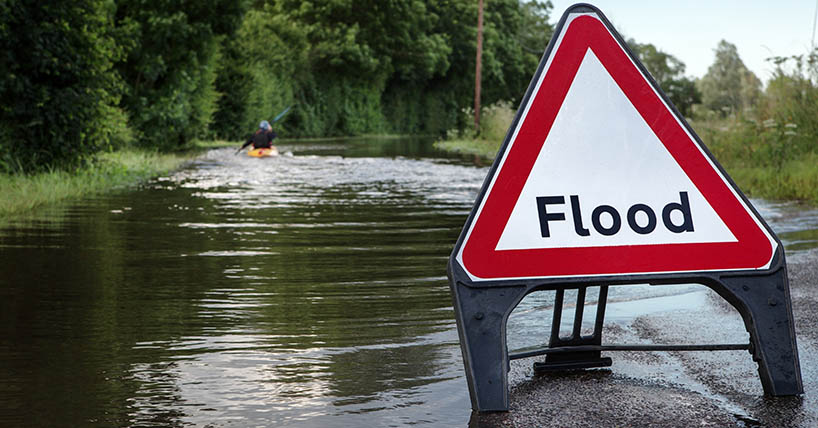Future drainage
Climate adaptation on future changes to UK rainfall intensities
Published on: 22 July 2021
Climate experts have published guidance to help water and sewerage companies and flood risk management authorities to prepare for future increases in rainfall intensities from global warming.
Published today (22 July), are data and user guidance from FUTURE-DRAINAGE, a Newcastle University-led consortium involving the Met Office, JBA Consulting and Loughborough University, funded by the NERC (UKRI) UK Climate Resilience Programme. The data on future rainfall changes (‘uplifts’) are designed for organisations who need to allow for an increase to design storm rainfall in sub-daily to daily durations, to account for the impact of climate change projections in the UK
The team used the new UK Climate Projections (UKCP) high resolution 2.2km data (UKCP Local) to derive more robust rainfall uplift estimates using the high greenhouse gas emissions scenario RCP8.5 for 2050 or 2070.
Hayley Fowler, Professor of Climate Change Impacts at Newcastle University’s School of Engineering, said: “It is clear that the pace of climate adaptation in the UK is failing to keep up with increasing climate risks, with this growing gap recently identified by the Committee on Climate Change. Recent flood events have been made more intense by global warming, and their impacts show the need for upgrades to existing infrastructure systems across the UK. The new rainfall uplifts from FUTURE-DRAINAGE will provide the climate change allowances for high-intensity rainfall needed for climate adaptation; increasing our climate resilience to these severe weather events.”
Dr Steven Chan, Research Associate at Newcastle University’s School of engineering and Met Office Visiting Scientist, added: “The uplifts are estimated using the latest statistical tools for spatial extremes, developed at the University of Exeter, including additional proxies to account for local processes like orographic and coastal effects. The tool gives uncertainties of the uplifts per UKCP local model realisation; these are combined to give a total uncertainty envelope. We use that envelope to estimate the most-likely and reasonable-worst-case-scenario of future change.”
Professor Lizzie Kendon, Science Fellow at the Met Office and Professor at Bristol University, said: “The uplifts from FUTURE-DRAINAGE are the first user application of the new UKCP Local (2.2km) projections that were updated on 22nd July 2021. These represent a major step forward in our ability to reliably project future changes in hourly precipitation extremes – critical for understanding future changes in surface water flooding. Here these state-of-the-art climate projections have been combined with advanced statistical modelling to provide new estimates of short-duration precipitation extremes. Results have been tailored to stakeholder needs, to help inform flood management and urban drainage design in a changing climate.”
Murray Dale, Technical Director, JBA Consulting, prepared the guidance.
He said: “Understanding the impacts of changes to rainfall intensities in the future is vital for long-term investment planning in the water industry and wider flood risk community. Rainfall estimates are made using standard Flood Estimation Handbook (FEH) data to test the resilience of existing drainage systems and flood resilience schemes, and to design those of the future. To allow for climate change effects, the rainfall uplifts produced by FUTURE-DRAINAGE can be applied to FEH data to allow for future projected increases in rainfall. The uplifts produced vary by location, rainfall event duration and event rarity (return period) and supersede those produced on a UK Water Industry Research project in 2017.
“The uplifts and their output format have been developed in close consultation with a project stakeholder group comprising representatives of many UK water and sewerage companies and UK regulators. This information represents a world first: countrywide climate change allowances for high-intensity rainfall derived from a convection-permitting climate model with quantified uncertainty.”




